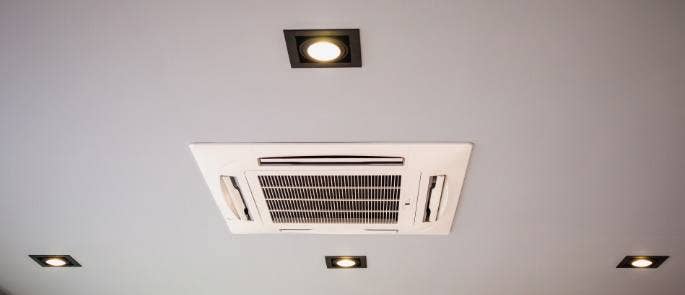Working in Hot Weather: Legal Requirements, Guidance, and Tips
Working when it’s warm can be a real challenge. The UK may not typically associate summertime with soaring temperatures and endless blue skies, but heatwaves are increasingly common. When these hot days occur, it can be difficult for people to stay cool at work – whether they’re working in an office, at home, in a shop or warehouse, or outdoors.
Because extreme hot weather is a relatively infrequent hazard, many employees and even employers may not know the best approach for staying cool at work and what the law states about working in hot weather. The good news is that there are legal requirements and guidance in place to help businesses address the issue of working in the heat.
This article will explain what the legal requirements are around working conditions, discuss the guidance provided by the Health and Safety Executive (HSE), and provide some advice and tips for helping workers working in the heat. It will help answer common questions like what temperature is too hot to work in, the legal maximum working temperature, and how to complain about the temperature at work.
The topics covered in this article include the following:
- Can it Ever Be Too Hot to Work in the UK?
- Is There a Legal Maximum Working Temperature?
- How Can Employers Determine What Temperature is Too Hot to Work In?
- What Can Employers Do to Make Working in the Heat More Comfortable?
- What Are Some Tips for Working in the Heat for Employees?
- How to Complain About the Temperature at Work
- What About Working from Home in the Heat?
Use the above links to jump to that section of the article.
Can it Ever Be Too Hot to Work in the UK?
We’re fortunate that the UK rarely reaches temperatures that are too hot to work in. Over the years, however, global temperatures have been gradually on the rise, meaning heatwaves and hot summers are increasingly common. With this comes more difficult working conditions – particularly if the workplace doesn’t have air conditioning – which can lead to heat stress and fatigue.

This means it’s more important than ever for employers to understand their legal duties surrounding working in hot weather. Similarly, it’s useful for employees to know what their legal rights are regarding what their employer should be doing for them. As a result, concerns can be raised confidently and they can follow the controls that are in place for them.
Is There a Legal Maximum Working Temperature?
It can be complicated to dictate the right temperature for a specific work area and for an individual, which means there is no legal minimum or maximum working temperature in the UK. As the HSE states, “Individual personal preference makes it difficult to specify a thermal environment which satisfies everyone.”
However, there is still a legal requirement on employers to manage the health and safety risks to employees, and this includes those that can be posed by a work environment, such as excessive heat.
Heat stress can make workers incredibly uncomfortable and put their health and safety at risk. At best, it can lead to manageable fatigue, but in many cases can result in major exhaustion and dehydration that impacts a person’s working ability, productivity, and health and safety. For example, difficulty concentrating in safety-critical roles could lead to a mistake that poses a serious risk.

Whatever the case may be, it is the employer’s legal duty – and in the business’s best interest – to maintain a comfortable temperature, so productivity and health and safety are maintained. This applies to both indoor and outdoor work.
Despite there being no legal working temperatures, the Health and Safety Executive (HSE) states that working temperatures should provide reasonable comfort to workers and prevent risks.
They provide temperature ranges that are – as stated – not legal requirements, since it can depend on various factors. However, these give a good benchmark and starting point for employers to use for preventing heat stress.
“The risk to the health of workers increases as conditions move further away from those generally accepted as comfortable. Risk of heat stress arises, for example, from working in high air temperatures […] For workplaces where the activity is mainly sedentary, for example offices, the temperature should normally be at least 16 °C. If work involves physical effort, it should be at least 13 °C (unless other laws require lower temperatures).”
How Can Employers Determine What Temperature is Too Hot to Work In?
Ultimately, every employer must carry out a risk assessment to help them determine what temperature is suitable for their work environment, and to identify the necessary controls to achieve this. As mentioned, they should take into consideration the recommended temperatures and HSE guidance, but should also assess a range of other factors to fully inform their risk assessment. What is suitable for one work environment may not be for another.
Factors such as the ambient temperature, humidity, air flow, radiant heat, sun exposure, worker clothing, and movement should all be considered.

This will help the employer to determine what temperature in a working environment is reasonably comfortable, and what needs to be done to reach this comfort.
In terms of what needs doing, the HSE provides advice on actions that may arise from the risk assessment. The specific actions required for a business depends on the factors mentioned above, so it is down to them to identify which controls are right for their work activities and environment.
What Can Employers Do to Make Working in the Heat More Comfortable?
Employers have a responsibility to make sure their staff’s working conditions are safe and as comfortable as possible. Fortunately, there are many measures that can be taken to manage working in hot weather.
Actions that employers may take following a risk assessment include:
Moving people’s working areas to cooler locations.
For example, they could move desks that are in direct sunlight away from that area, or, for outdoor working, move certain tasks into a shaded area where possible. The sun’s heating effects on indoor environments can also be addressed by orientating the building away from it (such as a temporary building on a construction site), or, where this is not possible, installing blinds or shutters on sun-facing windows.
Employers may also accommodate flexible working hours so people can work earlier or later when temperatures are not as intense and the sun has moved away from directly heating the working area.
Introducing engineering controls for managing the thermal effect in a work environment.
For example, they may look at what is contributing to heat other than the weather and could be making it worse, to help reduce the overall ambient temperature. This could include moving machinery that emits heat to another area, for instance.
Installing and maintaining air conditioning units where possible.
This may not always be reasonably practicable however, so other measures, like those listed here, may need to be considered. Similarly, they may look at providing desk fans or temporary cooling units to improve air circulation and keep people cool at their desks.

Looking at dress codes and personal protective equipment (PPE).
For example, if office work usually means wearing a suit, employers could look at relaxing this rule in hot weather, allowing more informal wear such as no ties or no suit jackets to cope with the heat. For outdoor workers, they will need to think about whether PPE is necessary, such as hats, to protect them from the sun.
Providing refreshments and sufficient breaks.
By law, employees should have access to fresh drinking water. Likewise, employers should ensure that people can take rest periods and breaks from work. This will be particularly important for outdoor working, to ensure workers can have a break out of direct sunlight in a comfortable environment (such as an airconditioned breakroom).

Monitoring at-risk individuals.
Some people may be more susceptible to heat than others. For example: people with certain illnesses, health conditions, on certain medication, or who are pregnant. Extra precautions may need to be taken for them, such as enabling them to carry out less strenuous work when it’s warm.
Further advice on all of this can be found on the HSE website, and in the following guidance documents and pages: guidance for heat stress, workplace health, safety, and welfare, and outdoor working.
Need Health and Safety Training?
High Speed Training provide a range of online health and safety training courses, including Health and Safety Training for Managers and Health and Safety for Home Workers.
Our Health and Safety Training for Managers covers the topic of as work environment, so those in charge of health and safety know what needs to be done to create a healthy and safe work environment to look after employees.
Similarly, Health and Safety For Home Workers informs the learner about what employers should be doing to manage the health and safety of those who work at home, and teaches employees how to adhere to measures put in place for their health and safety.
What Are Some Tips for Working in the Heat for Employees?
Employers must follow all the necessary legal requirements for managing working in hot weather, and will provide information, instruction, or training where required to employees about what controls they’ve put in place.
This should also include sharing advice and tips for working in the heat, which are supported by their control measures. It is then down to the employee to ensure they follow the advice and tips they’ve been given.
For example, tips for working in hot weather include:
- Working in a cooler area where possible.
- Drinking plenty of water and/or cold drinks throughout the day to stay hydrated.
- Taking frequent breaks, in a cooler area if possible, to regain concentration and rest.
- Keeping blinds, shutters, and curtains closed on sun-facing windows.
- Keeping windows closed during the day to minimise hot air circulating, and instead opening them in the early and late hours of the day when it’s cooler.
- Using desk or standing fans, which help the body cool itself down easier.
- Wearing light-coloured, loose clothing. Avoid dark colours and heavy fabrics, especially if working in direct sun, as dark colours absorb the heat whereas light colours reflect it.
- Using ice packs and cold flannels to help keep cool. For example, sitting with an ice pack against both feet. Feet have lots of pulse points, and so placing an ice pack there will enable a cool down effect across the body. A cold flannel on the back of the neck also works.

If employees are unable to follow these tips due to them not being facilitated at work, then they should raise their concerns with their manager or supervisor.
How to Complain About the Temperature at Work
It can be difficult to know how to complain about the temperature at work. However, if employees feel that their employer isn’t doing enough to control the temperature at work, they absolutely can and should raise concerns about working in the heat.
They should speak with their manager or supervisor about this, explaining the effect that the temperature is having on their physical state and their work, including productivity and health and safety. The guidance throughout this article can help equip employees with knowledge about their rights regarding working in hot weather.
Following raised concerns, the risk assessment should be revisited and further controls put in place to help manage the heat where necessary.
What About Working from Home in the Heat?
For those working from home on a temporary or permanent basis, the lines may appear to be blurred between who is responsible for what. But it’s important to note that employers have a duty to ensure the health and safety of all their employees, regardless of where they work.
This means they should make the necessary arrangements to help employees who work from home maintain a comfortable temperature.

Measures they may take include many of those described above, such as providing fans to help cool the employee’s working area and allowing flexible working, as well as providing guidance on how to stay cool. For example, ensuring staff know to keep curtains closed in sun-facing rooms, and encouraging them to take plenty of breaks to drink water and regain their concentration.
If employees working from home still struggle with heat after these considerations, further measures may need to be discussed as part of the risk assessment.
For example, they could assess whether there is a local office that is air-conditioned or generally cooler than their home where they can temporarily work.
Working in the heat is never ideal, but fortunately there are measures that employers can take to mitigate the risks. There are no legal temperature requirements, but the law does require employers to ensure workers are comfortable and safe, so temperature is something that they must consider as part of their risk assessment.
Every business should therefore have measures in place for when the temperature rises to uncomfortable levels, to ensure people’s health and safety isn’t put at risk. Employees should follow the controls in place and any information and advice they receive to help manage working in hot weather. If the situation calls for it, they can raise their concerns to let their employer know that more needs to be done to help them work comfortably and safely.
What to Read Next:
- Understanding DSE: Do You Know How to Set Up A Desk Ergonomically?
- PAT Testing for Home Workers
- Warehouse Safety Quiz
- Workplace Health & Safety Quiz
- Workplace Health and Safety Quiz for Employees
- Office Health and Safety Quiz
- Online Health and Safety Courses











